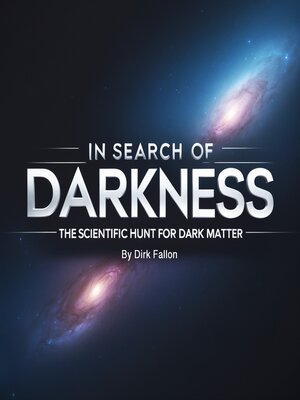
Sign up to save your library
With an OverDrive account, you can save your favorite libraries for at-a-glance information about availability. Find out more about OverDrive accounts.
Find this title in Libby, the library reading app by OverDrive.



Search for a digital library with this title
Title found at these libraries:
| Library Name | Distance |
|---|---|
| Loading... |
Dark matter is one of the greatest mysteries in the universe. Despite being invisible and undetectable by traditional means, it accounts for a significant portion of the universe's mass. It has been a subject of scientific inquiry for over a century, and yet, it remains largely elusive. The term "dark matter" was first coined in the 1930s by astronomer Fritz Zwicky when he observed that galaxies in clusters were moving much faster than expected based on the visible matter they contained. Zwicky hypothesized that there must be some unseen mass, which he referred to as "dark matter," to explain the extra gravitational pull. This idea was revolutionary at the time, but it took decades for the concept of dark matter to gain widespread acceptance in the scientific community.
In the following years, astronomers and physicists continued to gather indirect evidence for dark matter's existence. The observation of galaxy rotation curves provided another compelling clue. Galaxies, such as our Milky Way, were found to rotate faster at their outer edges than could be explained by the visible matter alone. If only the mass of the stars and gas were considered, the galaxies would not be able to maintain their rotation speeds without breaking apart. However, the additional gravitational influence of dark matter seemed to explain this discrepancy, pointing to its presence.
Despite this evidence, scientists still have no direct way to detect dark matter. It does not emit, absorb, or reflect light, making it invisible to traditional telescopes and detectors. The most that can be done is to observe its effects on visible matter, radiation, and gravitational forces. The hunt for dark matter has since become a driving force in astrophysics and particle physics, with scientists developing new methods and tools to try and detect it.







